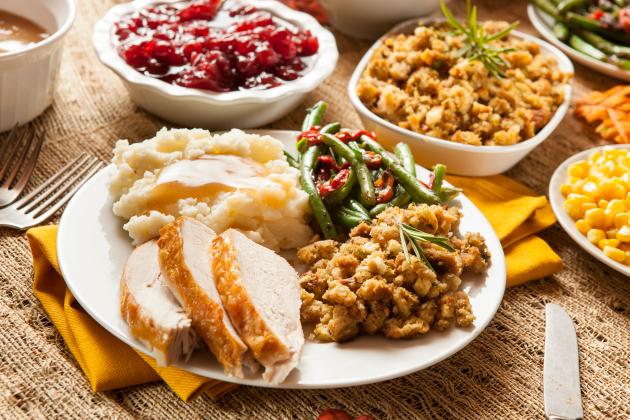“Meat the Future”
By: Jenilee Godsey Twin Creeks Extension District Youth Agriculture Agent
In the past, I have shared with you an article that I had written talking about the importance of knowing where our food comes from. To build off of that, I wanted to share an article I found discussing “The STEM of Thanksgiving Dinner” found on the Iowa Ag Literacy website.
With Thanksgiving last week, it may be a bit late to think about your meal but it’s always a great time to be thinking about the STEM (Science, Technology, Engineering and Math) behind the food on our tables! For the sake of our information today, we will include agriculture – which you may see used in the acronym STEAM. Now, let’s get started!
In most situations, the turkey is the staple of the Thanksgiving dinner. In the STEM Ag Literacy article, they share, “The poults (baby turkeys) are raised in a barn to provide the optimal environment – temperature, humidity, and biosecurity. The birds grow from roughly 3 ounces to as much as 42 pounds.” The turkeys typically reach market weight within 19-20 weeks, which is possible thanks to genetics that have been improved through selective breeding practices and proper nutrition.
Production Fact: Did you know that Minnesota is that top producing turkey state in the U.S.? Seventy-five percent of the birds raised there end up in grocery stores in every other state of our country.
What is something tart, yet sweet that you often find on dinner tables across the country throughout the holidays? …You guessed it, the cranberry! Actually, one-fifth of the cranberries eaten in the U.S. are eaten on Thanksgiving. At the end of the growing season and throughout harvest, cranberry fields are flooded. This is done because they are buoyant, and when knocked off of the vine with a little mechanical assistance the berries will float to the surface of the water.
Production Fact: Wisconsin comes in first place for U.S. cranberry crop – claiming 60% of the production. Other common cranberry production states include Maine, Massachusetts, New Jersey, Oregon and Washington.
What would Thanksgiving dinner be without potatoes – mashed, scalloped, sweet potatoes – any or all varieties! But, did you know that sweet potatoes are not actually related to the other potato varieties? According to the Ag Literacy article, “Potatoes, like the white Russet variety, are in the nightshade family like tomatoes. Sweet potatoes, most often with orange flesh, are in the morning glory family. Potatoes are the fourth most farmed crop on the planet. There is a lot of science that goes into producing potatoes. The only way to ensure similarity and uniformity in the potato harvest is to cut potatoes from the previous year and plant those as root stock for the next year’s crop. Sweet potatoes, on the other hand, are planted by slips – or growing vines. The tubers will grow from the nodes of the slips.”
Production Fact: Americans eat approximately 130 pounds of potatoes in one year, and Idaho’s soil, climate and natural mountain irrigation make it the perfect place to be deemed as the spud capital of the U.S.! On the other side of the country, you will find North Carolina, which is the king of Sweet Potato production.
I’m not sure about you, but in my opinion no Thanksgiving dinner can be complete without a pumpkin pie! As you probably know, there are a multitude of pumpkin varieties, but a good pie pumpkin is one that has thick flesh. Ag Literacy’s STEM of Thanksgiving article states, “Pumpkin seeds are planted in June for an October harvest. The vines will flower and the flowers have to be pollinated by insects before they will produce a fruit. Once harvested, the pumpkins can be processed and canned to provide the filling to a delicious pumpkin pie.”
Production Fact: In Morton, Illinois you will find the Libby’s pumpkin processing plant. Within a 90-mile of this mid-American town, you can find 90% of the United States pumpkins grown.
Although there are so many more dishes on the Thanksgiving table, the ingredients listed above are some of our favorites as they were domesticated in the Americas. May your dinner table be full of tasty dishes and STEAM conversations during the holidays this year!
Information in this article has been adapted from the Iowa Ag Literacy article, “The STEM of Thanksgiving Dinner”.
Jenilee Godsey is a Youth Agriculture Agent for the Twin Creeks Extension District which covers Decatur, Norton, Graham and Sheridan counties. Email her at jenileem@ksu.edu or reach her by telephone at the Graham County Office, (785) 421-3411.
-10-

